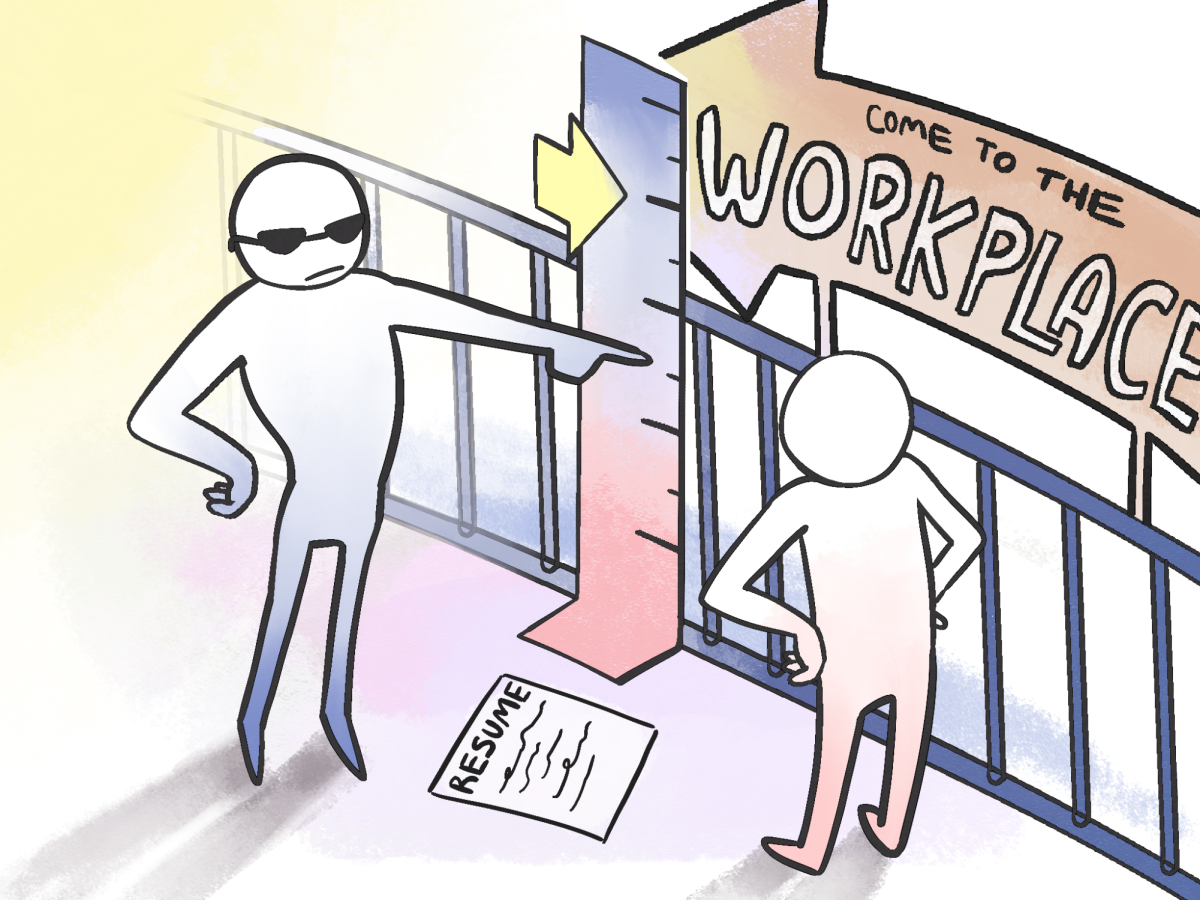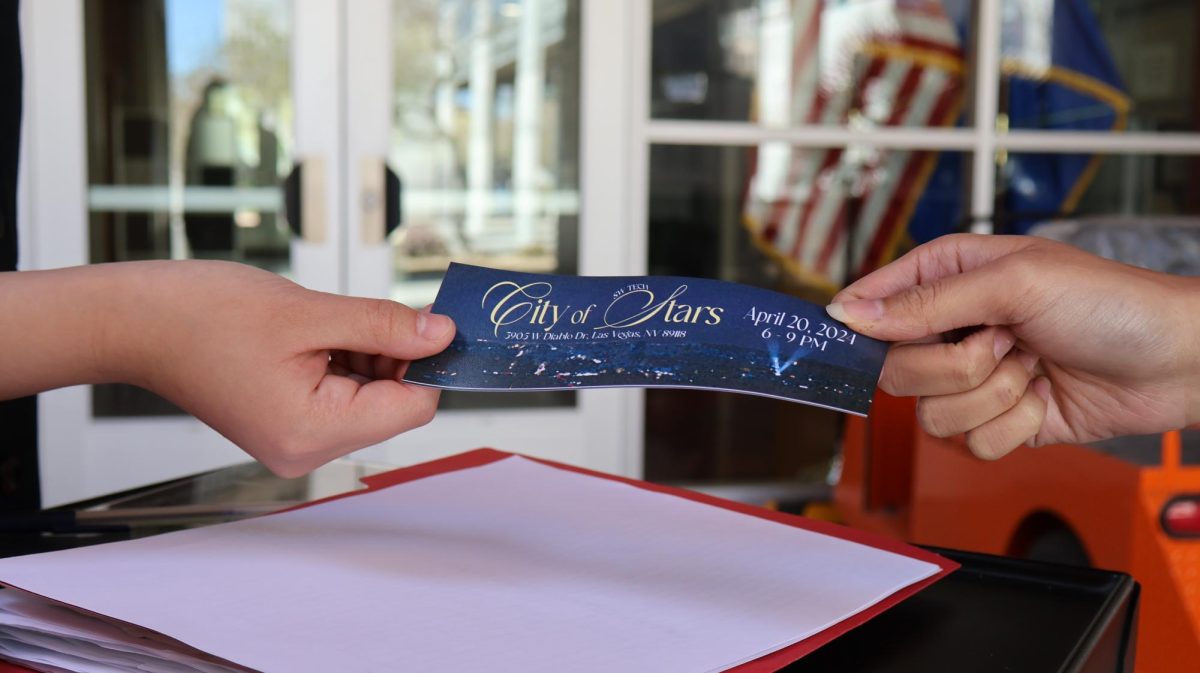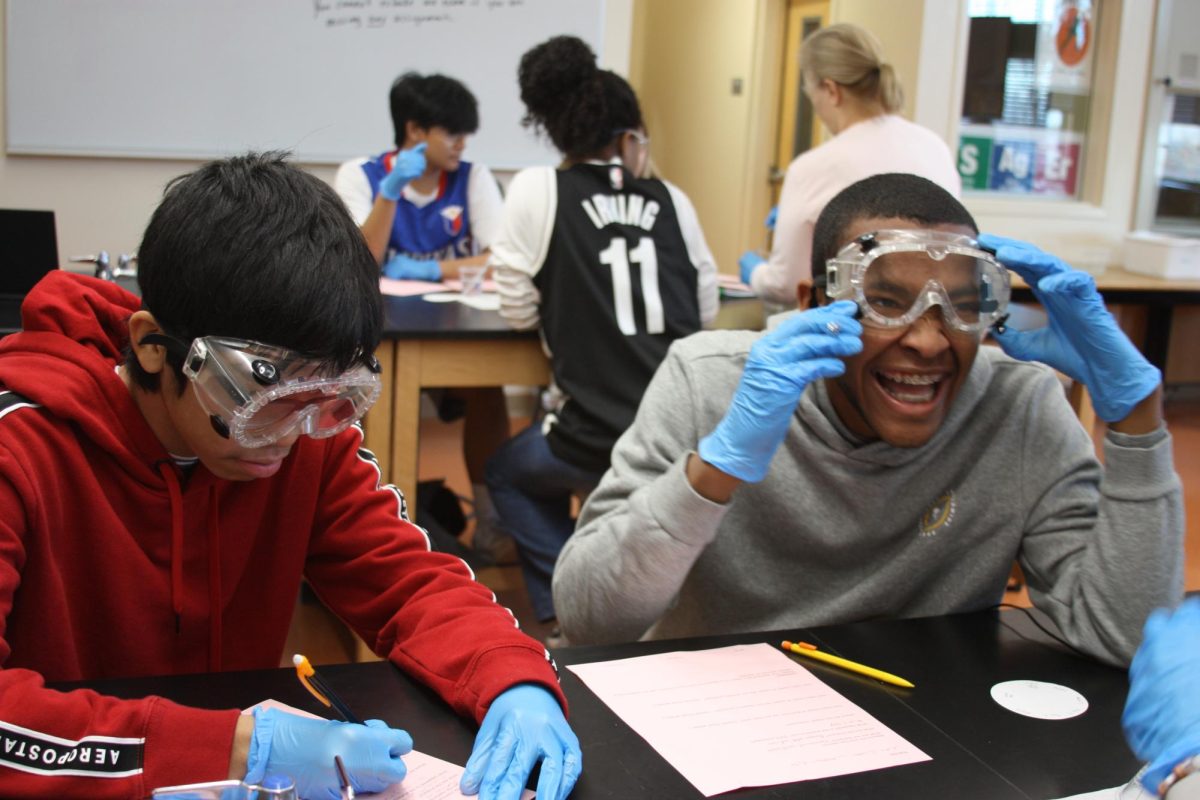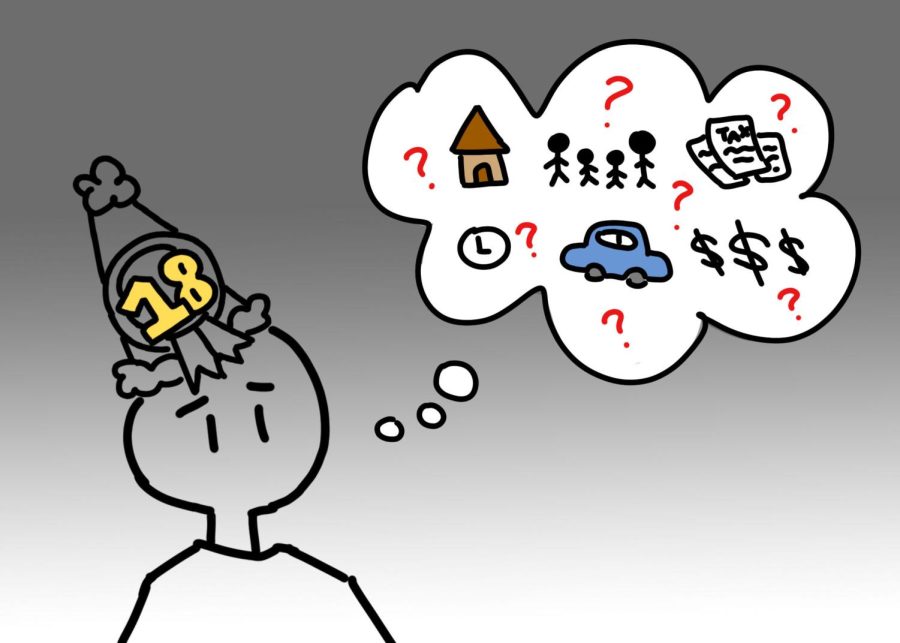Standing in the middle of The Home Depot with paint lining the aisles, Stephanie Gerken breaks down into tears. She just witnessed the dog she’s been raising for months, Freedom, bring back his owner, Tony, to reality.
Tony suffers from post-traumatic stress disorder (PTSD) and was hardly able to leave his house due to anxiety. Freedom was en route to becoming a service dog, and the dog’s ability to sense Tony’s distress showed Gerken that Freedom was a match for Tony.
“Freedom was always meant for bigger things, I knew he was meant to be a service dog,” Gerken said. “Something went over the speakers, and Freedom just looked at Tony and noticed something had changed, went right up to his elbows and just bumped him and brought him back to reality. And now Tony’s going to school and he’s coached his girls’ soccer team, he’s got five little kids, and this week he’s in Boston. And that went from a guy who never left his house except at midnight to go to Walmart.”
Service dogs are specially trained dogs that perform life-assisting acts for those with disabilities. There are currently very few to no regulations for this field, leaving it open to anyone hoping to work with dogs. Gerken has been training service dogs for several years, and has started her own program: Michael’s Angel Paws.
“I really wanted to know the science behind it, so I went to college and got an exotic animal training degree, which is a two year program working on nothing but theory and then applying it to working with exotics– lions and tigers and bears, oh my!” Gerken said. “After that I went to a school dedicated to K9 studies, and it was a six week certification process, but that was after I had eight years of dog training. A lot of dog training comes down to experience and time, and always continuing your education through seminars or watching other trainers.”
Branches of dog assistance
Within the dog assistance world, there are several types of support animals. Dogs can either go through years of training to become service animals, or no training at all and be registered as an emotional support animal (ESA). Along with emotional support, there are therapy dogs, which require some level of training beyond ESA.
Service dogs go through more intense training and have broader capabilities. There are currently more than 20,000 registered service dogs in America.
“Service dogs are specifically trained to help someone and they have to be focused on the handler at all times,” Gerken said. “The big thing we teach our clients is the unobtrusive help, so seen but not seen. The biggest compliment you can get is if you walk out of a restaurant, and they’re like ‘Wow, I didn’t even know there was a dog here.’”
Finding the perfect fit
When it comes to finding the right dog, the dog’s personality comes before its breed.
“As far as selecting a service dog, we don’t care about breeds,” Gerken said. “We’re looking for a specific temperament: easy going and laid back. I usually go for what we call ‘couch potato’ dogs– not too excited but when you’re down they sit there and aren’t super hyper because if they’re too hyper they’re going to be too much for a person with disabilities to handle. The caveat to that is training becomes a little bit more difficult because you have to always be motivating the dog until they get there, but once they get the concept, they’re spot on.”
“The first option is to have your own dog become a service dog, so we temperament test them and go from there,” Gerken said. “The second is to get a rescue dog, which is my favorite because we save two lives. The third option is you have someone open their heart and raise a dog for six to 12 months and do the basic obedience and public access training and get a feel for the dog’s personality. Then I look at this dog and these people’s personalities and see if they’d be a good match, and then we do a meet and greet with the dogs to see if there’s an instant bond. What we’re really looking for is that connection between the dog and person. If there’s no connection, it’s not gonna work.”
After selecting a dog, Gerken offers two different programs. The option for service dogs is a two year process.
“We have it set up in two programs: we’ve got the Service Dog Program and the Community Dog Program,” Gerken said. “Service Dog Program is to help veterans and civilians with disabilities live a more independent life. In the Community Dog Program, we do group lessons and private lessons to help minimize the number of dogs sent to shelters.”
Once a dog has passed temperament testing and been matched with an owner, the dog goes through a two year training program including learning how to go to the bathroom on leash, on cue and how to behave in public.
Put training into practice
Abana Stephenson has been training with her dog, Judah, for four years with the help of Gerken. Stephenson suffers from severe anxiety and PTSD, and has Judah to keep her calm.
“After I met Stephanie, I went to the shelter and had her on the phone with me, and we saw Judah, and I just stayed on the phone with her and I tested him around other dogs and in the play area. There were certain things she asked me like ‘Is he paying attention to the other dogs?’ and I said ‘No, not at all,’” Stephenson said. “We went through a thorough assessment with her and she said ‘Yeah, go ahead and get him and we’ll start training him.'”
With Judah at her side, something as simple as going out to eat is now possible for Stephenson.
“Basically everything, everything in the world [is easier],” Stephenson said. “I still have a lot of panic and I don’t always get out, but when I do, it’s way easier. Going to church, going to parks– when I make it there, he’s the only thing keeping me calm. I literally pet my dog almost continuously. It’s part of my anxiety, part of my PTSD. I just pet him constantly and it calms me down. He knows if I’m petting a lot then I’m having an anxiety attack.”
Although Judah has been simple to train, Stephenson’s anxiety holds her back from completing the process.
“The hardest thing is having PTSD and the phobia of leaving the house because I was homeless at one point, I was [sexually assaulted] and so leaving the house, I have this fear that if I even walk out the door, I’m gonna be homeless,” Stephenson said “I haven’t been able to get past that yet, so I think that’s my biggest challenge. I need to understand that I have a home, and I can leave this home and come back and it’s still my home.”
Stephenson’s need for Judah is not visible, so she wants others to understand that she still relies on Judah to help her get through the day, even if they may not realize it.
Life after training
Some dogs don’t make it past the two year training. These dogs are either reassigned or go back to being a pet.
“If a dog doesn’t make it through the program, we call them ‘career-change’ dogs,” Gerken said. “We have a file for every single one of the dogs in our program and this is why, because 70 percent of dogs don’t make it through training. If it’s the owner’s personal dog, they just go back to being a regular pet dog, and it’s up to the person if they want to pursue another dog. If we notice behavioral issues that will not make it a good service dog, if it was puppy raised then the person can adopt it or we find it another home.”
Once dogs reach a certain age, they may not be suitable to continue work as a service dog. At this time, it’s up to the trainer to evaluate how to proceed.
“You’ll see a lot of medium to large sized dogs,” Gerken said. “They have a life expectancy of about eight to 10 years, and when they get to that age we see how they’re doing. We look for health issues, have they started to not enjoy it as much, are things beginning to scare them? When they hit retirement age, they just get to chill, or they might go into therapy dog work and visit people. That’s where we come in as trainers and have to be the dog’s advocate, because 90 percent of the time the connection between the person and dog is such an intimate bond, that we have to have an outside person look in and make those decisions.”


















![Increasing issues with carbon emissions have students worried about the future of the Earth. An article written by the NCEI predicts that there’s a 22 percent chance that 2024 will be the hottest year, and there is a 99 percent chance that it will rank in the top five of the hottest years. “Where I live there’s a whole area where people just dump their trash, and who knows, in 10 to 30 years it might get so bad that we’ll just see trash everywhere,” sophomore Eliza Pangilinan said. “Even that small piece of trash went through a factory, and those factories produce a lot of gas [emissions].”](https://southwestshadow.com/wp-content/uploads/2024/03/carbon_footprint-1-1200x900.jpeg)





